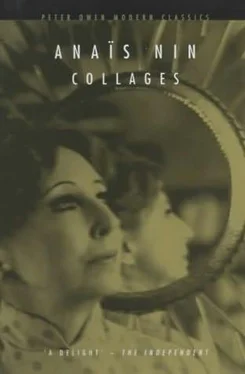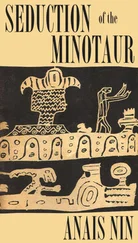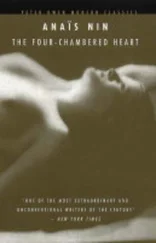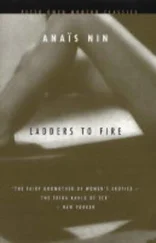Then the woman in slacks became intensely active, placing and turning the paintings at an angle where the sunlight would illumine rather than consume them.
The paintings were all in sharp contrast to the attenuated colors of Downey. Deep nocturnal blues and greens and purples, all the velvet tones of the night.
Cars began to stop and people came to look.
One visitor said: “These trees have no shadows.”
Another visitor said: “The faces have no wrinkles. They do not look real.”
The crowd that had gathered was the same one who came to the empty lot at Christmas to buy Christmas trees, or in the summer to buy strawberries from the Japanese gardeners.
“I have never seen a sea like this,” said another spectator. The woman in slacks laughed and said: “A painting should take you to a place you have never seen before. You don’t always want to look at the same tree, the same sea, the same face every day, do you?”
But that was exactly what the inhabitants of Downey wanted to do. They did not want to uproot themselves. They were looking for duplicates of Downey, a portrait of their grandmother, and of their children.
The painter laughed. They liked her laughter. They ventured to buy a few of the smaller paintings, as if in diminutive sizes they might not be so dangerous or change the climate of their living room.
“I’m helping you to tell your house apart from your neighbor’s,” said the painter.
There was no wind. Between visitors the painter and her friends sat on stools and smoked and talked among themselves. But one capricious, solitary puff of wind lifted a strand of blonde hair away from the painter’s face and revealed a strand of dark hair under the mesh of the wig. But no one noticed or commented on it.
The light grew dim. The painter and her friends packed the remaining paintings and drove away.
Back at her house by the sea, the painter stacked her paintings against the wall. She went into her bedroom. When she came out again the wig was gone, her long black hair fell over her shoulders, and she wore a Mexican cotton dress in all the soft colors of a rainbow.
It was Renate. The blonde wig lay on the bed, with the slacks and the big sweater. And now she also had to make the paintings look like her own art work again, which meant restituting to them the fantasmagorical figures of her night dreams. The plain landscapes, the plain seascapes, the plain figures were all transformed to what they were before the Downey exhibit. The figures undulated, became bells, the bells rang over the ocean, the trees waved in cadences, the sinuosities of the clouds were like the scarves of Arab or Hindu women, veiling the storms. Animals never seen before, descendants of the unicorn, offered their heads to be cajoled. The vegetative patience of flowers was depicted like a group of twittering nuns, and it was the animals who had the eyes of crystal gazers while people’s eyes seemed made of stalactites. Explosions of the myth, talkative garrulous streets, debauched winds, oracular moods of the sands, stasis of the rocks, attrition of stones, acerose of leaves, excrescence of hours, sibylline women with a faculty for osmosis, adolescence like cactus, the corrugations of age, the ulcerations of love, people seeking to live two lives with one heart, inseparable twins.
She restored to the empty landscapes all the mythological figures of her dreams, thinking of Rousseau’s words in answer to the question: “Why did you paint a couch in the middle of the jungle?” And he had said: “Because one has a right to paint one’s dreams.”
Renate was painting a canal of Venice, shimmering like an unrolled bolt of changeable lame silver and gold, and the shadow of a gondolier upon the water, the one seen by Byron or by George Sand. But the gondola in reality was passing by and through the shadow with a gondolier dressed in work clothes, not in his nautical finery. And what he was transporting was not a pair of entranced lovers but a couch, quite obviously newly covered with fresh and vivid red brocade. To be delivered speedily to some occupied palace, occupied by a new enemy, the renovators. The second gondolier, while waiting to help carry the couch to its owner, was resting upon it, at ease, and had fallen asleep.
Renate was laughing. to finished the painting with the face of a cat looking through a heavily barred window.
When she was a child she felt that she had been born in the world to rescue all the animals. She was concerned with the bondage and slavery of animals, the donkey on the treadmills in Egypt, the cattle traveling in trains, chickens tied together by the legs, rabbits being shot in the forest, dogs on leashes, kittens left starving on the sidewalks. She made several attempts to rescue them. She cut the strings around the chicken’s legs and they scattered all over the market place. She opened all the cages she could find and let the birds fly out. She opened field gates and let the cattle wander.
It was only when she reached the age of fourteen that she realized the hopelessness of her task. Cruelty extended too far. She could never hope to extinguish it. It stretched from the peaks of Peru and the jungle of Africa to Arcadia, California, where the inhabitants protested against the wild peacocks who were wandering in the neighborhood and had them arrested.
So Renate began to paint the friendship of women and animals. She painted a luminous woman lying peacefully beside a panther, a woman with blue-tinted flesh floating on the opening wing of a swan, a woman with eyes like the eyes of her Siamese cat, a woman tenderly holding a turtle.
This turtle was so small that Renate had to use a magnifying glass to study its eyes. She was quite startled when she found herself facing the cold, malevolent glance of the turtle. Renate did not believe in the malevolence of animals. She had thought first of imprisoned animals; then of free animals; and finally of women and animals living in harmony.
She was now painting Raven, a girl with very long black hair and a pale skin who owned a raven, and whose wish for a raven had been born so early in her life that she could not remember how it had been born, whether from Edgar Allan Poe’s poem, or from a small engraving she still carried about as others carry photographs of their children.
She had always considered herself too gentle, too pliant. This dream of a fierce raven seemed to balance elements of her being.
“His black wings, his sharp beak, his strong claws completed me, added something I lacked, added the element of darkness,” she told Renate.
She searched for a raven and grew concerned when she heard that they were nearly exterminated in the United States.
She went to visit ravens at the zoo. She read that they had once been an object of veneration and superstition. Symbol of the night, of the dark side of our being? She noticed too that they were intelligent and mischievous. They learned to articulate words in a hoarse, cracked bass voice.
Once in San Francisco she picked up a newspaper and there was an advertisement by a rich eccentric old lady who had collected birds and animals and was forced to move back to Europe. She had a raven for sale.
Raven rushed to see her and met her raven there. She made a down payment and asked the old lady to hold him for her until she ound a proper home for him. But before she was quite ready, she received a telegram: “Raven arriving by T.W.A. Airline Flight 6 at 8 p.m. today.”
The image of her raven flying in a box from San Francisco startled Raven. She had somehow expected him to fly over on his own power.
When she found him in his box at the airport he seemed crestfallen and humiliated. His wings were held close to his body as if the flight had handicapped him forever. He looked angrily at the plane as an unworthy rival. He cackled and made harsh angry sounds. Raven took him home.
Читать дальше












